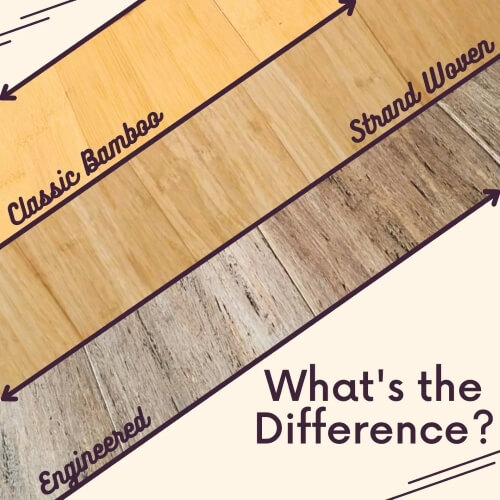Not all bamboo flooring is made in the same manner, and consumers should understand the difference before investing in this product. Strand woven bamboo flooring provides a distinct appearance and above-average performance, due to the unique way this eco-friendly flooring product is made.
How Strand Woven Bamboo Flooring is Made
This type of bamboo flooring begins with moso bamboo, grown to a specific size—approximately 2.4 inches in diameter and 1/10th of an inch thick.
During production, any moldy bamboo is discarded, and the raw stalks are cut into uniform strips to improve adhesion. The bamboo strips are also pressed early in the process to break apart the fibers, allowing more space for glue or adhesive to penetrate the wood. Some bamboo may be boiled to reduce natural sugars, making the wood more durable and insect-resistant.
Additionally, certain manufacturers carbonize the strips in high-temperature ovens to further eliminate sugars, waxes, and other organic substances. Carbonized strand-woven bamboo has a slightly lower Janka hardness rating, but some manufacturers combine both processes to create high-quality flooring.
Adhesives and Milling
After the bamboo strips have been processed, they are assembled into large bundles and treated with a low-VOC adhesive, which typically constitutes less than 10% of the total materials. The remaining portion is composed entirely of bamboo, a renewable resource cultivated in regions such as China and Japan. Once the adhesive has thoroughly penetrated the bundle, the material is subjected to a cold press, applying thousands of pounds of pressure to consolidate the stack into a single unit. This pressurized bamboo is then either steamed or dried to enhance its stability and strength. The resulting bamboo logs or timbers are transported to the mill, where they are cut into flooring planks.
Tongue and groove remain the predominant style for strand-woven bamboo flooring, with most manufacturers producing planks not exceeding 6 feet in length. However, certain high-quality strand-woven bamboo options feature a lock system for more convenient installation. The planks are then sanded to eliminate any imperfections and conditioned for a period of 1 to 2 weeks to mitigate the risk of cupping and warping before the finish is applied.
The Finishing Touches
Strand-woven bamboo flooring typically features distinct rings and comes in light, natural colors similar to pale hardwood. Carbonized strand-woven bamboo, on the other hand, has a deeper, rich brown hue. In some designs, carbonized and non-carbonized bamboo are combined to create a striking striped pattern. The ends of strand-woven bamboo may require putty to achieve a smooth edge, but this is applied before the coating and remains invisible.
Understanding the production process of strand-woven bamboo flooring helps consumers recognize how it differs from standard bamboo, though both are environmentally friendly and contribute to a fresh, natural ambiance in your home.
Talk to your wood flooring retailer about the differences in quality, price, and appearance before making your final decision.
